Audio Technica AT-OC9XML and AT-OC9XSL MC Cartridges
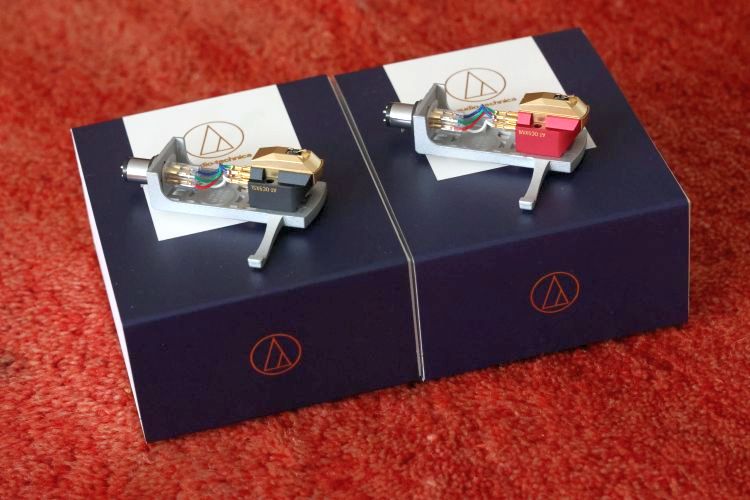
Retail prices incl. VAT:
AT-OC9XML (MicroLinear) – 599 euro
AT-OC9XSL (Special Fine Line) – 799 euro
Foreword
The two Audio Technica cartridges were purchased new and used for less than 20 hours when I made my assessments. Normally, a cartridge is not considered fully run-in at this point. However, I find that Audio Technica cartridges do not change a whole lot as they accumulate hours. Also, since both cartridges had the same disadvantage and were used under identical conditions, I think my observations are still relevant. Nevertheless, my conclusions must be considered more of a casual impression than a final judgment.
Stylus Shapes
The pricing on these cartridges surprised me as I would think the MicroLinear shape is generally considered more advanced than the Special Fine Line. While the Fine Line can be produced mechanically, just like the Elliptical shape, the very notchy MicroLinear or MicroRidge stylus shape is precisely cut using lasers. That said, stylus shape is not the only factor. The market also plays a large role, and certain stylus types are sometimes more widely produced or more popular than others.
(Special-) Fine Line versus MicroRidge/MicroLinear
Achieving satisfying bass using MicroLinear/MicroRidge stylus shapes can be hard as they are extra sensitive to correct Azimuth. A sub-optimal setup can lead to a lack of substance and lean bass. But, overall, I have very good experiences with them. I highly appreciate how they unveil the tiniest details in a highly articulate manner with immense resolution and refinement. That said, Conical, Elliptical, Shibata, and Fine Line stylii are often said to produce fuller bass, and based on my personal experience, I have to admit that this seems generally true.
With the AT-OC9XML and AT-OC9XSL, I wanted to investigate the relative performance of the Special-) Fine Line versus MicroRidge/MicroLinear stylus shapes. And what better way to do this than by using otherwise practically identical cartridges of the same brand?
For my comparisons, I mounted the two cartridges in the same manner (with the same overhang, same screw torque, etc) to two Audio Technica AT-HS10 headshells and listened to them using a Denon DP-3000NE Direct Drive turntable. This was made very easy by the SME-style headhell connector, considering the two cartridges have the same weight and size and the same requirements regarding loading, VTA, and VTF.
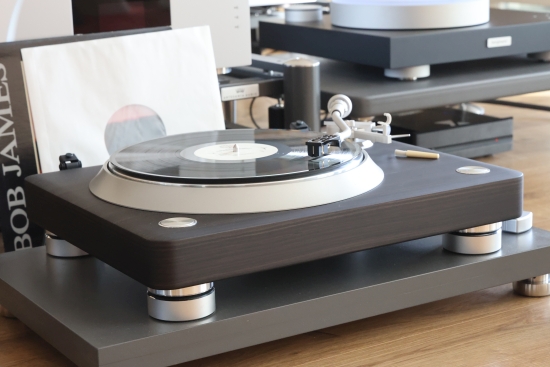
Denon DP-3000NE Turntable
Mounted on the Denon DP-3000NE turntable, both AT cartridges unveiled significantly finer details than the Denon DL-103 or DL-103R, which have a conical stylus. The two AT cartridges sound airier, more open, extended, transparent, and massively more refined. However, they both also sound quite a bit leaner and tonally cooler. The DL-103, by comparison, has a nice full body with a lively yet blossoming and inviting midrange. What the 103 does very well is to convey body, harmony, and tonal saturation without sounding thick or warm. Surprisingly, the DL-103R is airier and gentler than the regular DL-103 despite having the same stylus, but precisely for that reason, understandably, lags behind the two AT cartridges with their more advanced stylus shapes in terms of resolution, treble extension, and overall refinement.
Besides providing a more detailed and refined sound, advanced stylus shapes are highly recommended if you play a lot of used vinyl, as I do. Especially when the record is superficially worn, the DL-103, with its conical stylus, can sound flat and dull as it sort of glosses over the finer detail that only still exists deeper in the grooves. Here’s where both AT cartridges excel and remain lively and expressive as they access still-intact information deeper in the grooves.
Soundstage-wise, the Denon sounds impressively large, but compared to the Audio Technica cartridges, the Fine Line and MicroRidge stylii provide a much more nuanced rendition. While they do not provide a wider or deeper stage, there’s much more separation between individual sounds within the soundstage. The Audio Technicas present the instruments and other spatial sounds in their own positions at different layers and at different depths, whereas the Denon lumps these individual sounds more together.
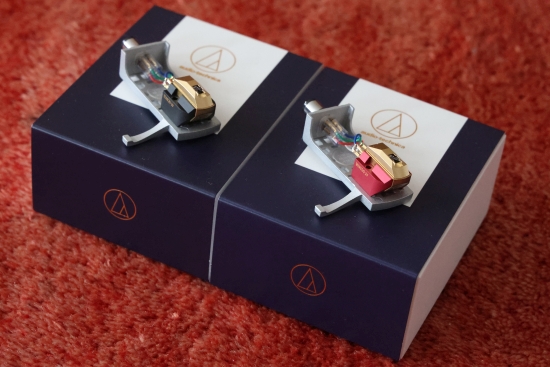
AT-OC9XML versus AT-OC9XSL
It is commonly indicated that Fine Line sounds similarly detailed as MicroRidge but with more solid bass, which sure “sounds” ideal for me. Since I am a big fan of MicroRidge stylii, but I also love solid bass, I held high hopes for the AT-OC9XSL Special Fine Line cartridge, especially since it also carries the highest price tag of the two.
After swapping the headhells, my observations were only partially aligned with my expectations.
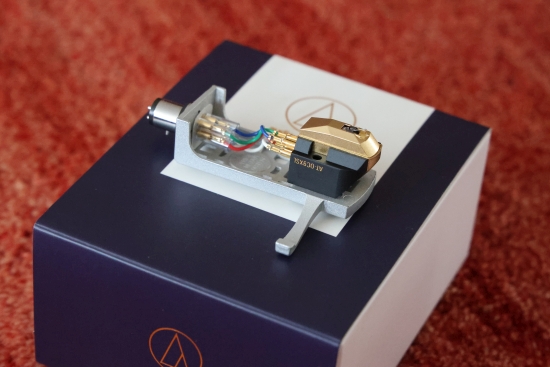
AT-OC9XSL Special Fine Line
I expected that the AT-OC9XSL Special Fine Line cartridge would sound less airy and detailed than the AT-OC9XML MicroLinear and indeed, it does. Where the AT-OC9XSL would sound almost hyper-detailed (yet not etched, as AT carts, in general, tend to sound highly refined), the AT-OC9XML sounded relatively more “normal”, more like I would expect an Elliptical stylus to sound.
I did not expect the AT-OC9XSL Special Fine Line cartridge to sound less powerful and impactful in the bass. Sure, its bass was rounder than that of the AT-OC9XML MicroLinear, which could be interpreted as leaner. But AT-OC9XSL’s bass was round to the point of being woolly and indistinct, and as a result, lacking the visceral impact to truly make the bass sound better, more impressive, and more realistic.
When I next found that the AT-OC9XSL Special Fine Line consistently portrays textures less distinctly and vividly than the AT-OC9XML MicroLinear, which leads to a subjectively more artificial sound, I developed a strong preference for the AT-OC9XML MicroLinear.
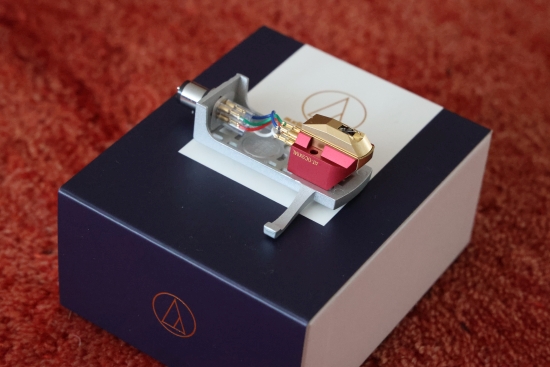
AT-OC9XML MicroLinear
However, even with the T-OC9XML MicroLinear, I started missing the DL-103’s engaging solidity and fullness. At this point, I suspected the Denon turntable to have a more musical synergy with the DL-103 and less so with the Audio Technica cartridges. Both AT cartridges are clearly superior from an audiophile standpoint, but musically speaking, I much preferred the Denon cartridge.
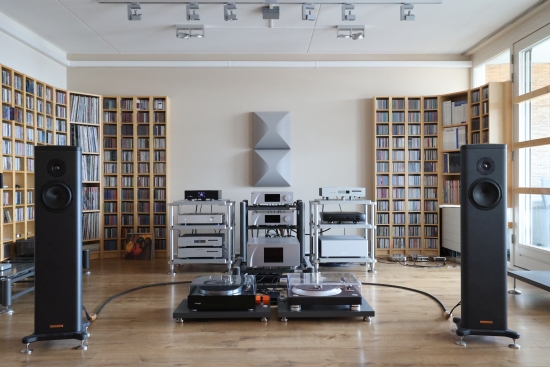
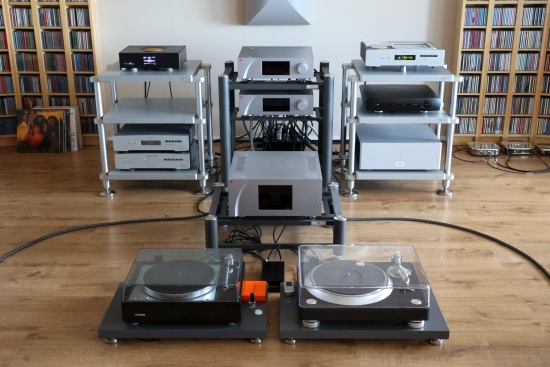
Thorens TD-1601 Turntable
Next up was the Thorens TD-1601 turntable, a belt-driven player with a spring-loaded sub-chassis and a very stiff tonearm, altogether a very different design from the Denon DP-3000NE, which is a Direct Drive turntable with an unusual loosely-coupled, specially damped tonearm.
The Thorens headshell (just a thin aluminum plate) is screwed directly under the tonearm, making for a very stiff connection, almost like a continuous arm, but also making the process of mounting a cartridge quite a bit fiddlier than with the removable headshells with an SME collar connector. Also, it meant that I could not prepare both AT cartridges for a quick swap.
The cartridge I chose to mount first was the one I liked most so far: the AT-OC9XML MicroLinear.
Right off the bat, the cartridge performed superbly well with the Thorens turntable. Again, I heard the cartridge’s intrinsically ultra-precise yet ultra-refined sound, combined with great fluidity, well-extended treble, and lots of air. If anything, the cartridge sounded slightly tilted up, with leaner bass than I would prefer and slightly more treble than strictly neutral. But it had no sharpness, hardness, or edge, just pure and free-flowing music. With the TD1601, it simply did not sound technical at all, nor devoid of color.
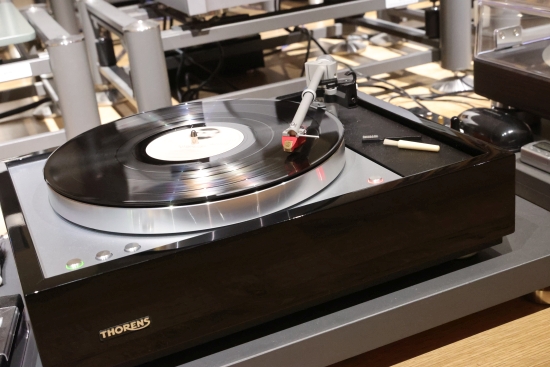
With some more experimentation, I achieved the ideal Azimuth, leading to a slightly fuller bass and lower midrange. It remained slightly lean but consistently satisfied my technical mind and never failed to get me emotionally involved. In short, I felt it was a great match! It was so great, in fact, that I was reticent to remove the cartridge and mount the AT-OC9XSL Special Fine instead.
Since I much preferred the AT-OC9XML MicroLinear over the AT-OC9XSL Special Fine with the Denon turntable, and I could not imagine it performing meaningfully differently, I opted not to mount it on the Thorens and sell it.
At the time of writing, we are two months down the line with lots of records played, and the AT-OC9XML MicroLinear has gained a little more color and substance, well up to the point that I am very happy with it. In absolute terms, it remains a nimble yet light-footed, slightly lean-sounding cartridge, but regardless, I like it a lot. I don’t think it can get any better at the price.
I owned various other AT cartridges, such as the ATN-150mlx, AT-33EV, and AT-33Sa. I held the highest hopes for the latter because of its Shibata stylus, but although I was impressed at first when used with the same Thorens TD1601 turntable, I soon started to become annoyed with its seemingly over-polished bass behavior, lack of incisiveness, and overall politeness. It just did not slam enough for my taste. The AT-150mlx was only used in classic Thorens turntables such as the TD160 MkII and TD125 MkII, but from memory, it had a very similar balance as the AT-OC9XML MicroLinear.
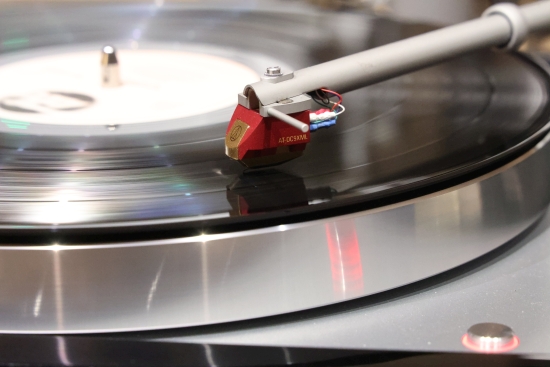
The plan was to also listen to the AT-OC9XSL Special Fine cartridge on the Thorens so that I could repeat the comparison. But considering the great results obtained with the AT-OC9XML MicroLinear, the knowledge of how the AT-OC9XML and AT-OC9XSL compare using the Denon turntable, and faced with the required work to mount the other cartridge, which meant losing my perfected current setting, I really could not bring myself to doing so. In any event, I think my impressions can still serve as a general pointer for those trying to decide between MicroRidge and Fine Line.
Conclusion
The AT-OC9XML MicroLinear offers an ultra-precise yet ultra-refined sound with great fluidity, well-extended treble, and lots of air. If anything, the cartridge sounds slightly tilted up, with leaner bass than I would prefer and slightly more treble than strictly neutral. But it has no sharpness, hardness, or edge, just pure, liquid, and free-flowing music. It combines superbly well with the Thorens TD1601 turntable, providing amazing resolution as well as emotion-inducing musicality.
Highly recommended, especially at its comparatively low price.

(AT-OC9XSL Special Fine Line is recommended, and AT-OC9XML MicroLinear is highly recommended)
Update 15-02-2025
Hindsight is 20/20… Oh well, we learn as we go along.
Armed with more experience after comparing the Thorens TAS 1500 MicroLinear and TAS 1600 Line Contact cartridges, I should have granted the AT-OC9XSL Special Fine Line cartridge more time. A lot more time, in fact.
In the Thorens review, I found that the two cartridges had exactly the same relative differences as heard earlier in this Audio Technica review. While the Thorens TAS 1500 MicroLinear cartridge sounded great from the very first minute, the TAS 1600 Fine Line cartridge sounded lackluster and dynamically restrained.
This time, I wondered why Thorens would pair their new arm specifically with this cartridge if it performed this way. So, I decided to give it more time. And, sure enough, it started to develop. After approximately 40 LP sides, however, things started to turn around, and the TAS 1600 was no longer lazy or soft. Eventually, after about two months, the cartridge was entirely free from its initial restraint.
I still own the two Thorens cartridges and can confirm that they are both excellent, although different in terms of tightness and dryness/crispness due to their stylus shape. Depending on the turntable, the support, the rest of the system, and personal taste, either cartridge should work very well. Just make sure to grant the Fine Line variants plenty of time to come on song!
Audio Technica Distributor for the NL: audio-technica.eu
Manufacturer’s website: Audio Technica
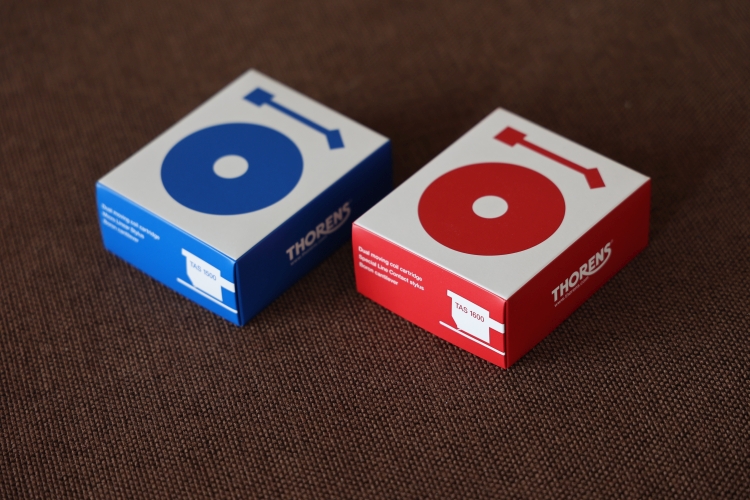
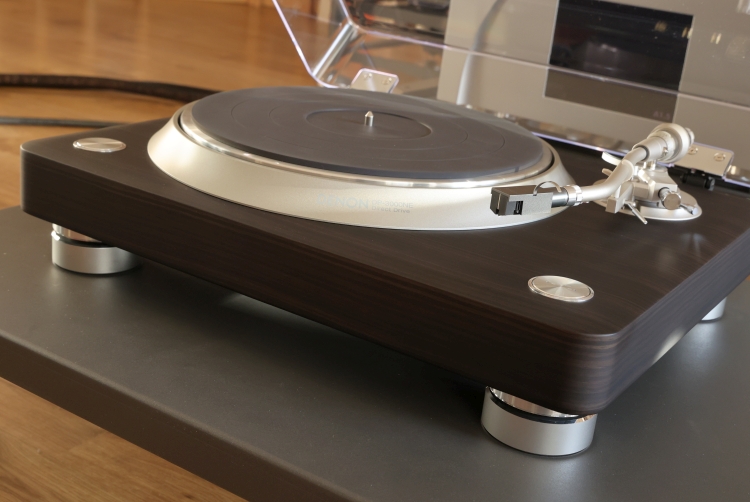
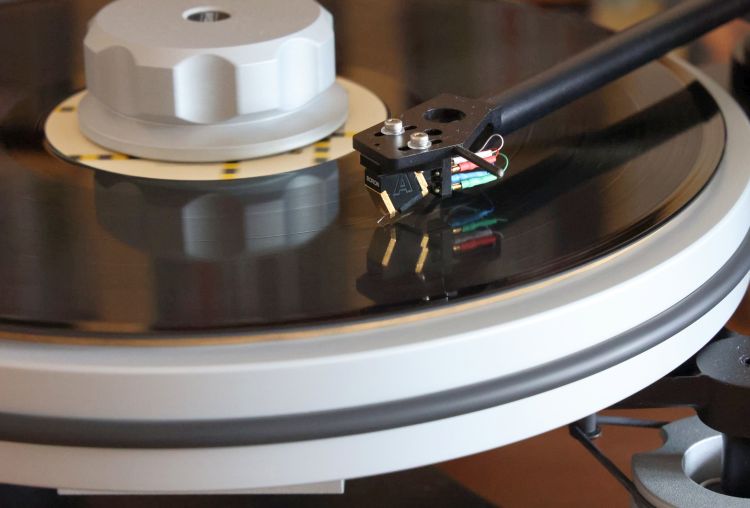
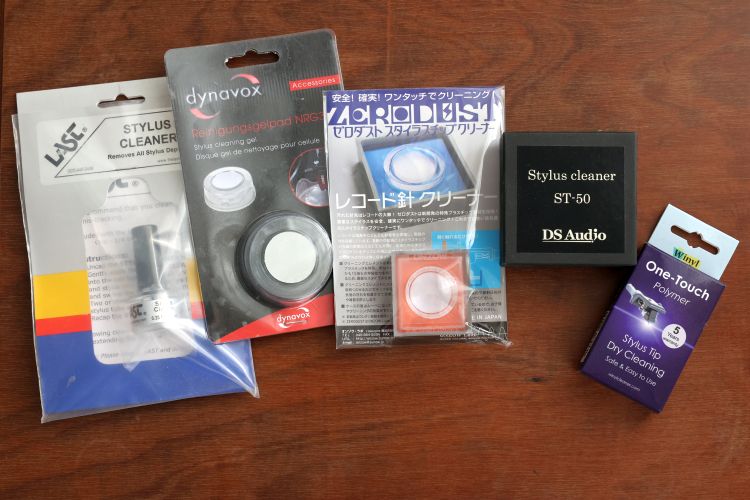
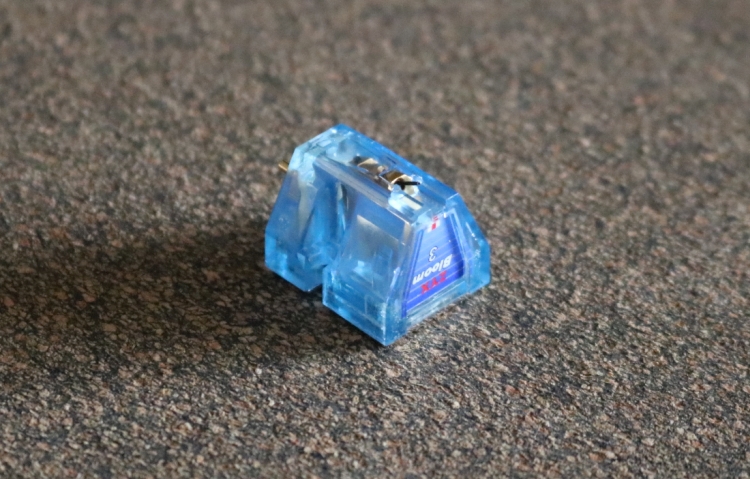
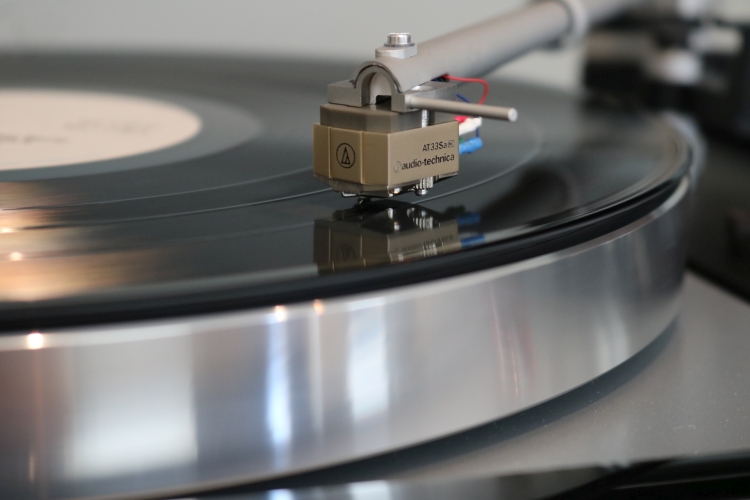
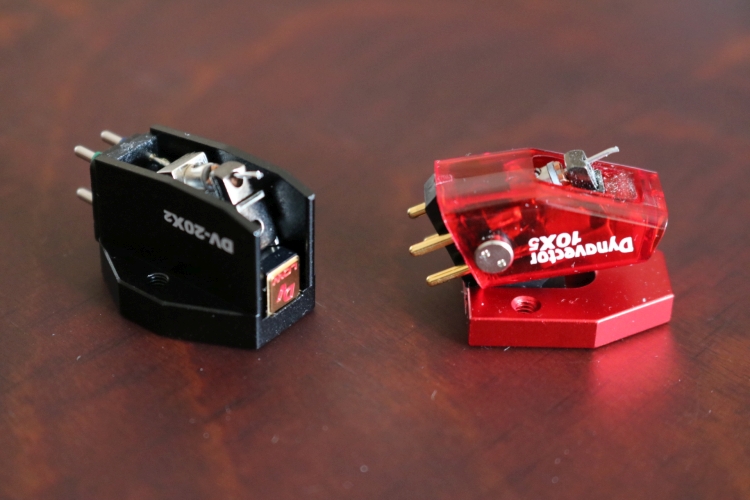
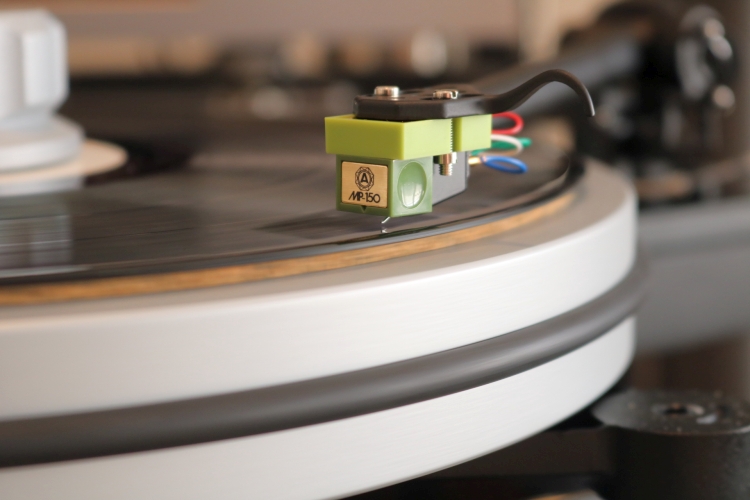
Bought one of these for my TD-1600 on the back of this review and so glad I did. I came from a Ortofon blue, so quite a bit of a jump but wasn’t expecting so big a leap in sound quality. I would definitely recommend this cartridge especially with a Thorens TT